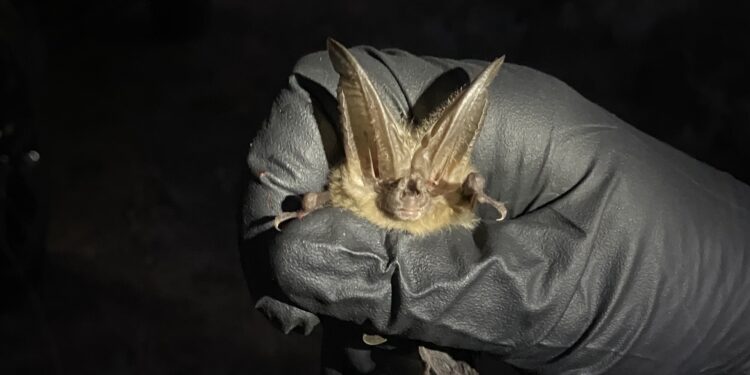Townsend’s big-eared bat captured in a mist net during field studies in California. Credit: Drew Stokes, CC-BY 4.0 (
A team of wildlife managers from the U.S. Geological Survey in San Diego, California, working with a colleague at the San Diego Museum of Natural History, has discovered the areas of San Diego County that need the most scrutiny if we want the bat populations in the region to be recorded.
In their study published in PLOS ONEThe group used existing bat population data in the San Diego County area to discover which bats need the most attention to avoid extinction.
As the research team points out, San Diego County is home to 22 of the 41 known bat species in the United States. Sixteen of these species are threatened with extinction. Preserving bat populations is important in the San Diego region and around the world because bats provide a major natural source of insect control. A single bat can eat up to 1,000 insects in just one hour. In this new effort, researchers investigated which parts of San Diego County should be prioritized for bat conservation efforts.
Researchers analyzed data on San Diego County’s bat population. Specifically, they focused on two data points: species richness and threats. Species richness data revealed information about bat diversity, including population size and health, as well as current conservation efforts around each. Threats included anything in the environment that could endanger individual bats or their communities.
The research team mapped where different species of bats lived and hunted for food. They found that bats faced three major threats: artificial lights, urbanization, and unconserved land (land that is not in its natural state). They noted that urbanization and artificial lighting make life particularly difficult for bats because they encroach on their natural behaviors.
Quantifying threats to bats at localized spatial scales for conservation and management. Credit: PLOS ONE (2024). DOI: 10.1371/journal.pone.0310812
Urbanization means fewer resources and artificial lighting can confuse bats because they are nocturnal and use light to tell them when to feed and when to return to their shelter. The data also helped plan conservation efforts involving installing bat boxes and planting native vegetation.
The team’s efforts resulted in an action plan to help San Diego’s bats survive as humans continue to change the landscape in which they live.
More information:
Brian M. Myers et al, Quantifying threats to bats at localized spatial scales for conservation and management, PLOS ONE (2024). DOI: 10.1371/journal.pone.0310812
© 2024 Science X Network
Quote: Bat data study reveals conservation priorities in San Diego County (October 11, 2024) retrieved October 11, 2024 from
This document is subject to copyright. Except for fair use for private study or research purposes, no part may be reproduced without written permission. The content is provided for informational purposes only.



